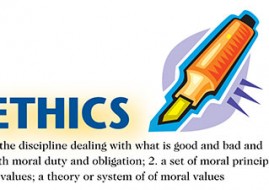Communicating with In-House Counsel
By Brad Rudin & Betsy Hutchings [Originally published in NYPRR May 2007]
Suppose counsel for the plaintiff in a personal injury action against a large municipality concludes that it would be more productive to speak directly to the lawyer who heads the legal division of the department of roads instead of the municipal attorney who is conducting the litigation. Following long-established and widely-known practice, the department of roads lawyer supervised the post-accident investigation, provided the facts submitted to the court by the municipal attorney, and assessed the risk of liability for the municipality. Court papers filed by the municipality were prepared and signed by the municipal attorney after review by the department of roads lawyer.
Does the “no-contact” rule in DR 7-104[A][1] bar plaintiff ‘s counsel from contacting the department of roads lawyer to suggest the weakness of the municipality’s defenses? The rule bars counsel from communicating on the subject of the representation with a represented party when counsel is aware of the representation, without the prior consent of the lawyer representing the other party.
City Bar Approves Contact
A recent City Bar ethics opinion, clarifying issues unresolved by the New York courts, concludes that a lawyer does not violate the no-contact rule by communicating with in-house counsel though outside counsel has been retained to represent the other client in the litigation. [See NYC Eth. Op. 2007-1 (March 2007), 2007 WL 758153.] The opinion states that the rule “does not prohibit a lawyer from communicating with an in-house counsel of a party known to be represented in that matter, so long as the lawyer seeking to make that communication has a reasonable, good-faith belief based on objective indicia that such an individual is serving as a lawyer for the entity.” It must be clear to the contacting lawyer that in-house counsel is not merely “outside counsel’s client.”
This analysis is consistent with the approach taken in the leading New York ethics treatise, which contrasts in-house counsel “who is involved in the litigation on a day-to-day basis” with other in-house lawyers who are not involved in litigation matters and spend most of their time on the administrative side of the organization. [See R. Simon, Simon’s New York Code of Professional Responsibility Annotated, West, 2006 at 1057-58.] Professor Simon concludes that a court would not be likely to find a violation of DR 7-104[A][1] in the case of in-house counsel who has clearly represented the interests of the entities in dealing with adverse parties Communication with the in-house lawyer would not breach the values underlying the “no-contact” rule. “The prohibition is founded upon the possibility of treachery that might result if lawyers were free to exploit the presumably vulnerable position of a represented but unadvised party.” [See C. Wolfram, Modern Legal Ethics, West, 2006 at 611.] Clearly, the risk of treachery is missing when the opposing lawyer communicates with in-house counsel who plays an active role in the litigation.
Ethics committees and courts in other jurisdictions have agreed that the objectives of the “no-contact” rule are not impaired when a lawyer communicates with in-house counsel. [See, Legal Ethics Committee of the District of Columbia Bar, Op. 331 (Sept. 2005) — interpreting the D.C. version of Model Rule 4.2 as not prohibiting communication with in-house counsel; In Re Grievance Proceeding, D. Conn. 2002, 2002 WL 311063389 — dismissing a charge of professional misconduct based on the lawyer’s communication within house counsel]. An opposing lawyer’s communication with in-house counsel is not prohibited by anti-contact principles set forth in §99 of the Restatement of the Law (Third) Governing Lawyers, American Law Institute: 2001, §100, Comment c.]
Conclusion
In light of the March 2007 New York City Bar ethics opinion, it seems clear that the plaintiff’s lawyer in our hypothetical would not run afoul of DR 7-104[A][1] by communicating with the department of roads lawyer. Because the in-house lawyer was actively involved in representing the interests of the municipality in the matter, there is no risk that the municipality would be adversely affected by contact with him. But the opposing lawyer should limit his communications to outside litigation counsel if either (1) no in-house attorney is involved in the matter, or (2) if the work of in-house lawyers is generally confined to non-litigation matters.
Brad Rudin and Betsy Hutchings are lawyers employed by Prisoners’ Legal Services of New York in Ithaca.
DISCLAIMER: This article provides general coverage of its subject area and is presented to the reader for informational purposes only with the understanding that the laws governing legal ethics and professional responsibility are always changing. The information in this article is not a substitute for legal advice and may not be suitable in a particular situation. Consult your attorney for legal advice. New York Legal Ethics Reporter provides this article with the understanding that neither New York Legal Ethics Reporter LLC, nor Frankfurt Kurnit Klein & Selz, nor Hofstra University, nor their representatives, nor any of the authors are engaged herein in rendering legal advice. New York Legal Ethics Reporter LLC, Frankfurt Kurnit Klein & Selz, Hofstra University, their representatives, and the authors shall not be liable for any damages resulting from any error, inaccuracy, or omission.
Related Posts
« Second Department Interprets Engagement Rule Risking Disqualification By Hiring Adversary’s Former Employee »













